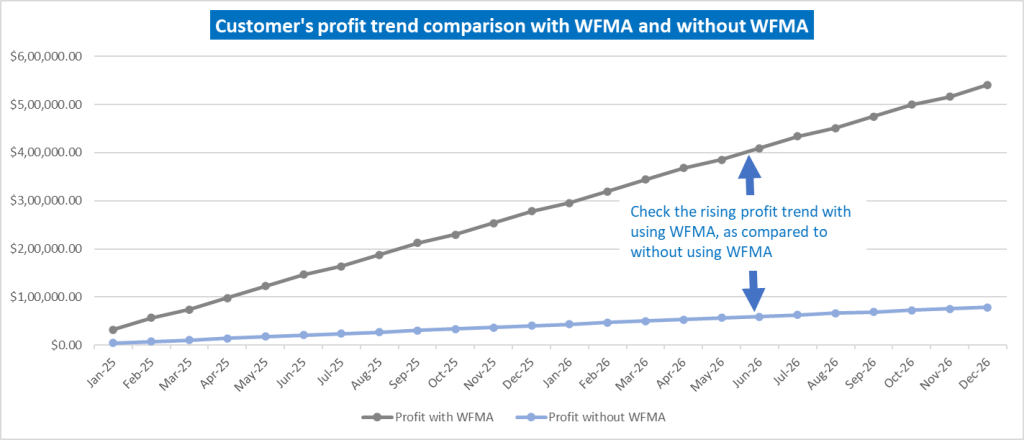Financial Benefits
Customer organizations achieve direct financial benefits by shifting their operations to WFMA.
If a staffing organization aims to make its operations software-enabled for the purpose of getting rid of the shortcomings of manual operation, it has two options. The first is to develop the necessary software, purchase hardware, and employ a team of software professionals to establish and maintain a software system, which would involve capital expenditures (CapEx). The second option is to choose a suitable SaaS platform, allowing the organization to conduct its operations by subscribing to the service, which would result in operating expenditures (OpEx). Generally, OpEx is significantly lower than CapEx.
WFMA is a SaaS platform that offers operational services for staffing businesses. Consequently, organizations that subscribe to WFMA, benefit from operating expenditures (OpEx). Additionally, WFMA uses a pay-as-you-go billing model, allowing customer organizations to manage their OpEx according to their business priorities.
In addition to these benefits, WFMA’s services and features enhance the productivity of non-billable overhead resources. As a business expands, the number of billable resources, clients, placement agents, and vendors also grows, resulting in an increased operational workload. To handle this rising demand, organizations often feel pressured to scale up their non-billable resources proportionately, leading to higher non-billable costs. Consequently, even if revenue increases, profits may not rise as anticipated. However, by maximizing the productivity of non-billable resources, WFMA allows organizations to manage growth without significantly increasing their operational workforce, keeping it to a minimum. Thus, organizations’ profit keeps rising with the business growth.
The graph below demonstrates a steady rise in profits for customers. It also provides a comparative analysis of profit trends for those using WFMA services versus those who do not. This analysis is based on calculations that take into account factors such as operational costs, WFMA subscription cost, billing expenses for vendors and contractors, revenue from clients and placement agents, and productivity levels with and without WFMA services. A detailed calculation sheet can be provided upon request.
